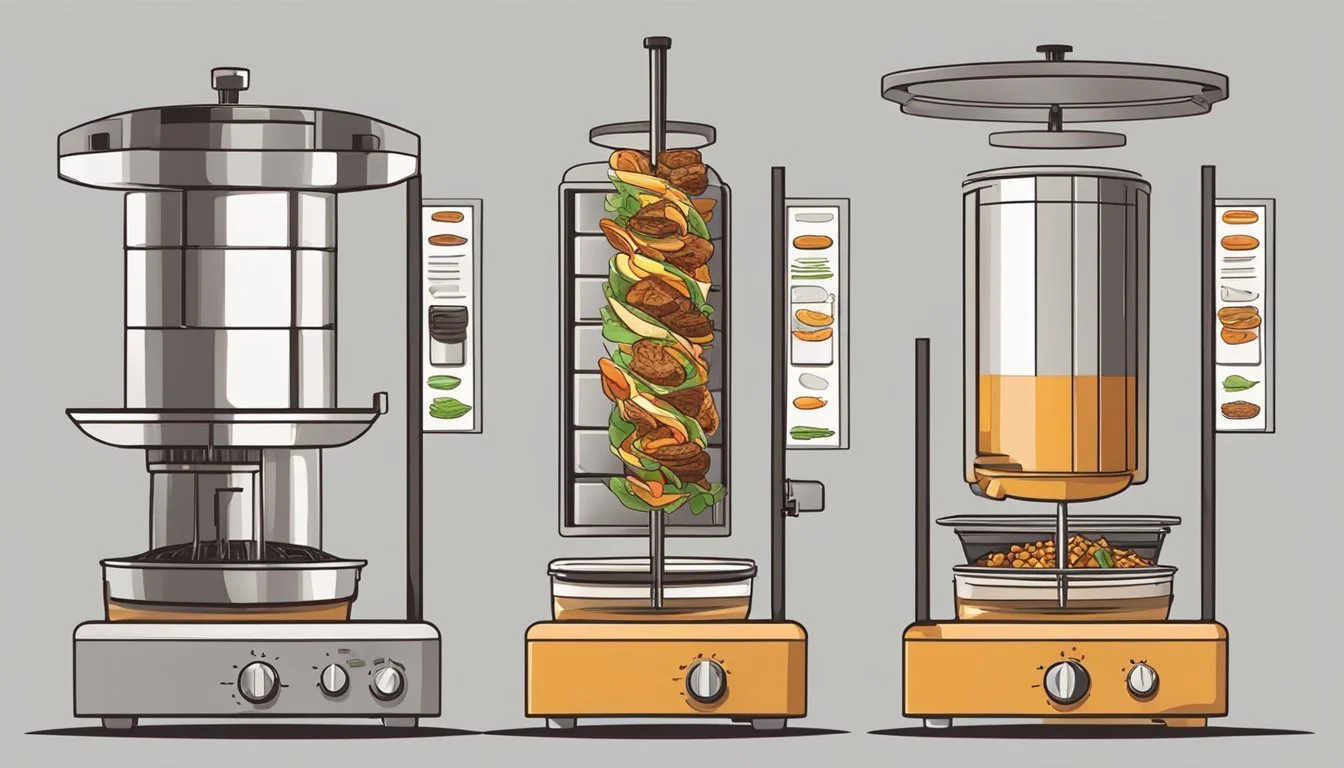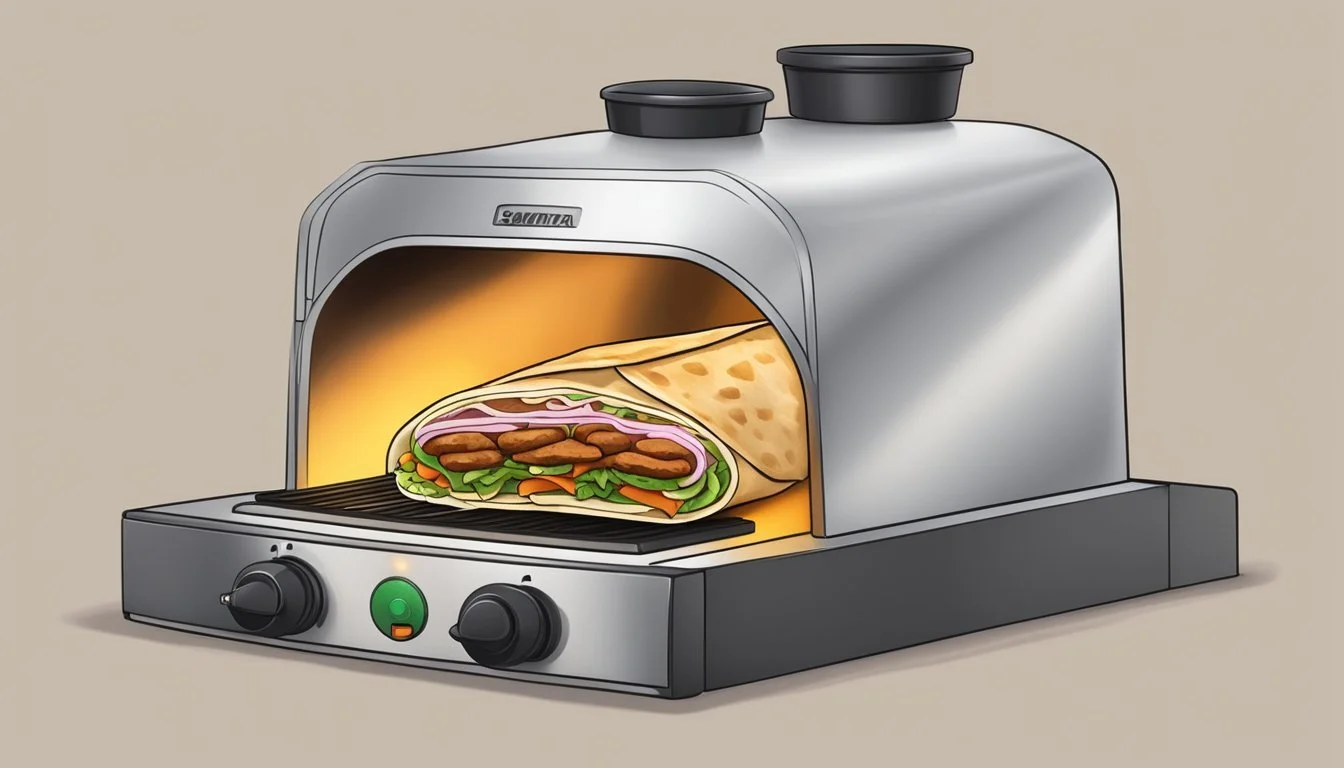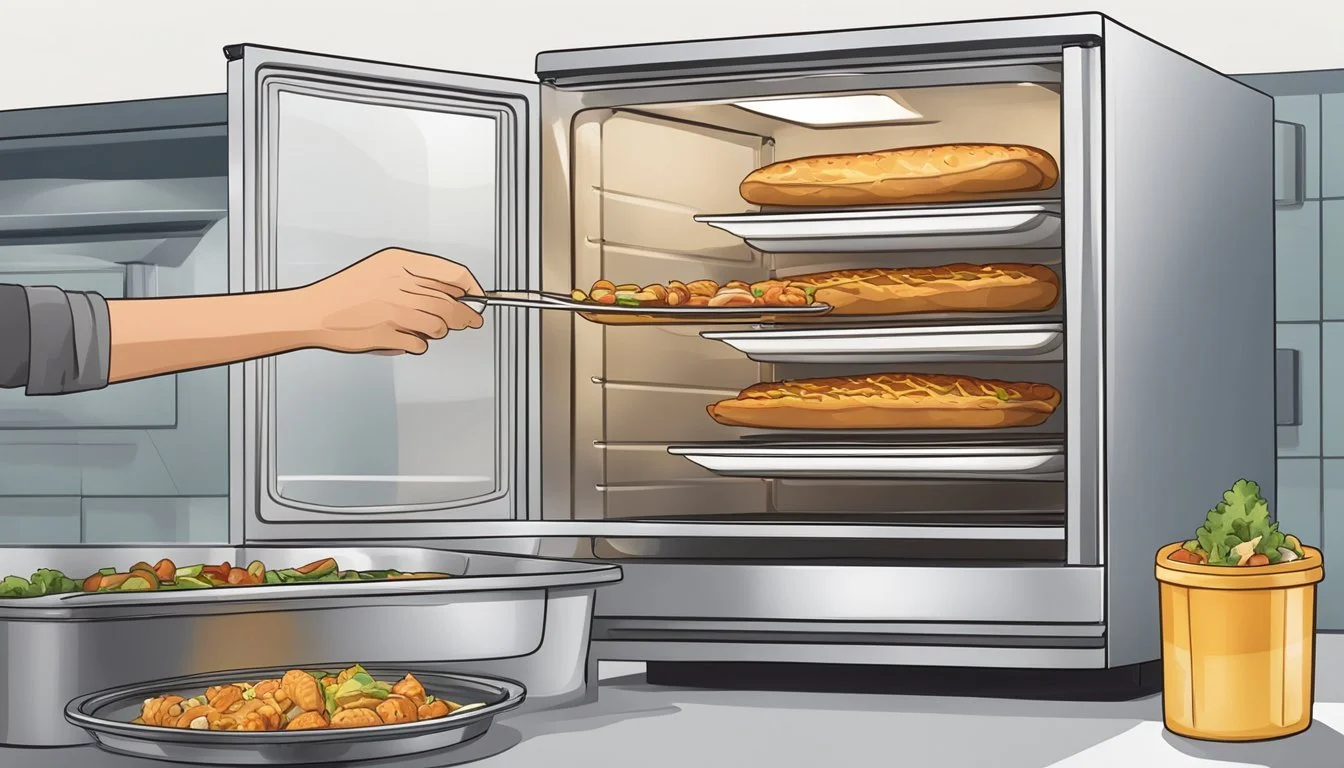Best Way to Reheat a Shawarma
Ensuring Juicy Meat Every Time
When it comes to enjoying leftovers, few dishes pose as much of a challenge as shawarma to maintain its original succulence and flavor upon reheating. Shawarma, with its tender slices of marinated meat, is a beloved dish worldwide, but its intricate blend of spices and juices can be compromised if not reheated properly. To ensure the meat remains juicy and flavorful, it's essential to use methods that replicate the tenderness and moisture of the freshly cooked dish.
Proper reheating techniques can make a significant difference in the texture and taste of shawarma. Traditional reheating methods often run the risk of drying out the meat or causing it to lose the delicate balance of Middle Eastern spices that make shawarma so unique. Whether one uses an oven, a skillet, or even a microwave, the key is in controlling the temperature and utilizing moisture retention strategies. This ensures that every bite of the shawarma is as satisfying as when it was first served.
Understanding Shawarma and Reheating Basics
Reheating shawarma properly is crucial to maintain its juiciness and flavor, while also adhering to food safety standards.
Defining Shawarma
Shawarma is a Middle Eastern dish featuring meat that has been marinated, then slow-roasted on a vertical spit for hours. It's thinly sliced and often served in a wrap or with sides. The texture and moisture of the meat make shawarma distinctive, aspects that are key to preserve during reheating.
Principles of Reheating
To reheat shawarma, one must balance temperature and time to restore warmth without drying out the meat. Reheating methods include:
Microwave Reheating: Quick but can unevenly heat and dry out the meat.
Cover with a damp towel.
Use full power for short intervals, e.g., 40 seconds.
Oven Reheating: Slower but provides a more even heat distribution.
Preheat oven to 350°F (175°C).
Cover shawarma with foil to retain moisture.
It's essential to reheat only until the meat is just hot enough to serve, avoiding prolonged exposure to heat.
Food Safety Considerations
Shawarma must be reheated to a safe internal temperature to prevent foodborne illness. Here are important points:
Safe Temperature: The shawarma must reach an internal temperature of at least 165°F (74°C).
Thermal Distribution: If using a microwave, stir or flip the shawarma halfway through heating for even temperature distribution.
Reheat Only Once: Repeated reheating can degrade the quality and safety of the food.
By understanding these basics, one ensures that the shawarma is not only enjoyable but also safe to consume upon reheating.
Preparatory Steps Before Reheating
Proper preparation is essential to ensure that leftover shawarma remains juicy and flavorful when reheated. Preparing correctly can mean the difference between a dry, tough meal and one that tastes nearly as good as when it was fresh.
Storing Leftover Shawarma
One must store shawarma properly to maintain its quality. Leftovers should be placed in the refrigerator within two hours of serving to prevent bacteria growth. Ideally, shawarma should be wrapped in aluminum foil or parchment paper, then placed in an airtight container. This helps to retain moisture and flavor until ready for reheating.
Choosing the Appropriate Reheating Method
Selecting the right reheating method is crucial for keeping the shawarma meat juicy. For quick reheating, using a microwave-safe plate and covering the shawarma with a damp paper towel can help to keep the moisture in. However, for better results, one may opt to use an oven or stovetop, reheating gently and covered to lock in the juices.
By following these preparatory steps, the shawarma is primed for a reheating process that aims to restore the fresh taste and tenderness of the meat.
Oven Reheating Technique
Reheating shawarma in the oven can ensure even warming and maintain the meat’s juiciness. By controlling the temperature and environment in the oven, one can recreate the succulent experience of freshly made shawarma.
Preheating Your Oven
Begin by setting the oven's temperature to 350 degrees Fahrenheit (175 degrees Celsius). It is crucial to allow the oven to reach the desired temperature before introducing the shawarma to ensure an even and gentle reheating process.
Using a Baking Sheet
While the oven preheats, one should prepare the shawarma for oven reheating. Arrange the leftover shawarma pieces in a single layer on a baking sheet. For larger quantities, ensure there is slight space between each piece to allow for proper heat circulation.
Maintaining Moisture in the Oven
To prevent the shawarma from drying out, tent the shawarma with aluminum foil. This helps to preserve moisture and prevents direct heat from making the edges too crisp. The shawarma should remain covered through the majority of the reheating period, only uncovering for the last few minutes if a crispier finish is preferred. Reheat for about 10-15 minutes, or until it reaches the desired temperature, checking periodically to ensure it does not overcook.
Microwave Reheating Strategy
When reheating shawarma in the microwave, the goal is to restore the warmth and moisture of the meat without overcooking it. The microwave method involves a delicate balance of steaming and heating in short intervals to achieve this.
The Role of Steaming
Steaming plays a critical role in keeping the shawarma meat juicy during the reheating process. The user should place a damp paper towel over the shawarma or cover the dish with a microwave-safe lid to create a steamy environment inside the microwave. This technique prevents moisture loss and helps evenly distribute the heat.
Instructions:
Dampen a paper towel and lay it over the shawarma.
Cover the dish with a microwave-safe lid or plastic wrap, leaving a small section uncovered for venting.
Reheating in Short Intervals
To reheat shawarma effectively, one should use short intervals at a reduced power setting to heat the meat thoroughly without making it tough. This approach allows gradual warming and avoids overheating, which could lead to drying out the meat.
Steps:
Set the microwave to a low power setting (around 50%).
Heat the shawarma for 30 seconds, then check.
Continue heating in 20-second bursts until the desired temperature is reached.
This careful method ensures that the shawarma retains its flavors and textures, similar to when it was first prepared.
Stovetop Reheating Approach
To preserve the juiciness and flavor of shawarma meat during reheating, the stovetop method offers precision and control. Utilizing a skillet ensures even heat distribution, while the inclusion of oils or broths can enhance moisture and taste.
Utilizing a Skillet
One needs to employ a skillet over medium heat to ensure the shawarma is reheated evenly. Shawarmas, particularly those containing chicken breast, should be placed into the pan carefully. It is important to:
Preheat the skillet to a steady medium temperature.
Place shawarma singly and avoid overcrowding.
Cover with a lid to retain heat and moisture.
Heat each side for 3-5 minutes or until the internal temperature is hot enough for serving.
Incorporating Oils and Broths
To prevent drying out, one can use olive oil or a light broth to reintroduce moisture. Here’s how to incorporate these effectively:
Add a small amount of olive oil to coat the skillet before adding the shawarma.
Alternatively, a splash of chicken broth can be used for reheating chicken shawarma (What wine goes well with chicken shawarma?) to maintain juiciness.
Allow the meat to simmer in the liquid briefly on each side, ensuring not to overcook.
By following these steps on the stovetop, the shawarma will be reheated to perfection, balancing a tender interior with a satisfying external texture.
Alternative Reheating Methods
When reheating shawarma, the goal is to warm the meat thoroughly while retaining its juiciness. Both air fryers and toaster ovens are excellent tools for this task as they circulate heat evenly around the kebab meat.
Using an Air Fryer
An air fryer is an efficient option to reheat kebab meat. It not only heats the meat quickly but also helps to maintain its crisp exterior. The user should place the chicken shawarma in the air fryer basket and set the temperature to a moderate heat, around 350°F (175°C). The meat should be heated for approximately 4-6 minutes, flipping halfway through.
Leveraging a Toaster Oven
A toaster oven is a versatile appliance that reheats shawarma effectively by using dry, even heat. Set the toaster oven to 350°F (175°C) and place the kebab meat on the rack. Cover it with aluminum foil to prevent drying out and reheat for about 5-7 minutes. For shawarma still on the spit, check for a uniform reheat by ensuring the internal temperature reaches at least 165°F.
Enhancing Flavor After Reheating
Reheated shawarma can be transformed with the addition of fresh ingredients and seasonings that enhance flavor and restore the zest akin to its original state. The key is to employ elements that complement the meat's richness without overwhelming it.
Adding Fresh Toppings & Sauces
Fresh toppings and sauces not only add a burst of flavor but also reintroduce moisture that may have been lost during the reheating process. Here are specific ways to enhance the shawarma:
Sauces:
Tahini Sauce: A drizzle of tahini sauce can add a creamy, nutty flavor.
Garlic Sauce: For a bold kick, garlic sauce is an indispensable choice.
Toppings:
Fresh Herbs: Parsley or cilantro can give the dish a refreshing lift.
Vegetables: Diced tomatoes and cucumbers add a juicy crunch.
Seasoning with Spices
Spices are integral to Middle Eastern cuisine and are essential for reviving the shawarma's flavor after reheating:
Cumin: A sprinkle of ground cumin can bring back the earthy tones inherent to shawarma.
Lemon Juice: A squeeze of lemon juice just before serving can brighten the dish and cut through the richness.
Serving and Presentation Tips
After mastering the reheating process, the way one serves a shawarma amplifies the dining experience. Presentation and accompaniment are crucial to enjoying this Middle Eastern dish at its best.
Pairing with Sides
Shawarma is traditionally accompanied with sides that complement its flavors. Serving it alongside pita bread provides a practical and authentic way to enjoy the meal. It's recommended to slightly warm the pita to make it pliable and to enhance its flavor. For sides, consider the following options for a balanced meal:
Pickled vegetables: These add tanginess and a crunchy texture that contrasts with the juicy meat.
Rice or couscous: A staple in Middle Eastern cuisine, these grains make for a hearty addition.
Salad: A simple salad with lettuce, tomatoes, and cucumbers dressed in olive oil and lemon juice adds freshness.
The Final Touches
Toppings and sauces are the final components that can elevate the shawarma. They should be used thoughtfully to not overwhelm the main flavors. Fresh vegetables like diced tomatoes, onions, and lettuce can add a refreshing crunch. Garlic sauce is a popular choice; its creamy texture and pungent flavor mesh well with the spices used in shawarma. Additionally, mayonnaise can be incorporated, but sparingly, to ensure it does not dominate.
The key is to balance all elements for a harmonious presentation:
Garlic sauce: Drizzle or serve on the side for diners to add to their taste.
Mayonnaise: Use lightly, if at all, to complement rather than mask the taste of the shawarma.
Remember, the serving and presentation of the shawarma should respect the dish's origin while allowing personal preference to guide the final touches.
Cleanup and Storage Post-Reheating
After successfully reheating shawarma, managing the leftovers and cleaning up is as important as the reheating process itself to ensure safety and maintaining quality for future consumption.
Handling Leftovers After Reheating
Once the shawarma is reheated, any uneaten portions should be stored properly to minimize the risk of bacterial growth. If the shawarma won't be consumed within two hours of reheating, it should be wrapped tightly in aluminum foil or placed in an airtight container. Then, the wrapped shawarma or container should be promptly refrigerated. It is crucial to keep reheated leftovers for a maximum of one to two days before consuming them again to ensure their safety and quality.
Proper Disposal and Cleanup
After eating, any disposable materials like napkins or aluminum foil used for reheating should be thrown away in the trash. Aluminum foil, if not too soiled, can alternatively be recycled depending on local recycling guidelines. Utensils and dishes used in the reheating and serving process must be washed with hot, soapy water or placed in the dishwasher for proper sanitation. It is essential to wipe down any surfaces or appliances that came into contact with the shawarma to prevent cross-contamination.






